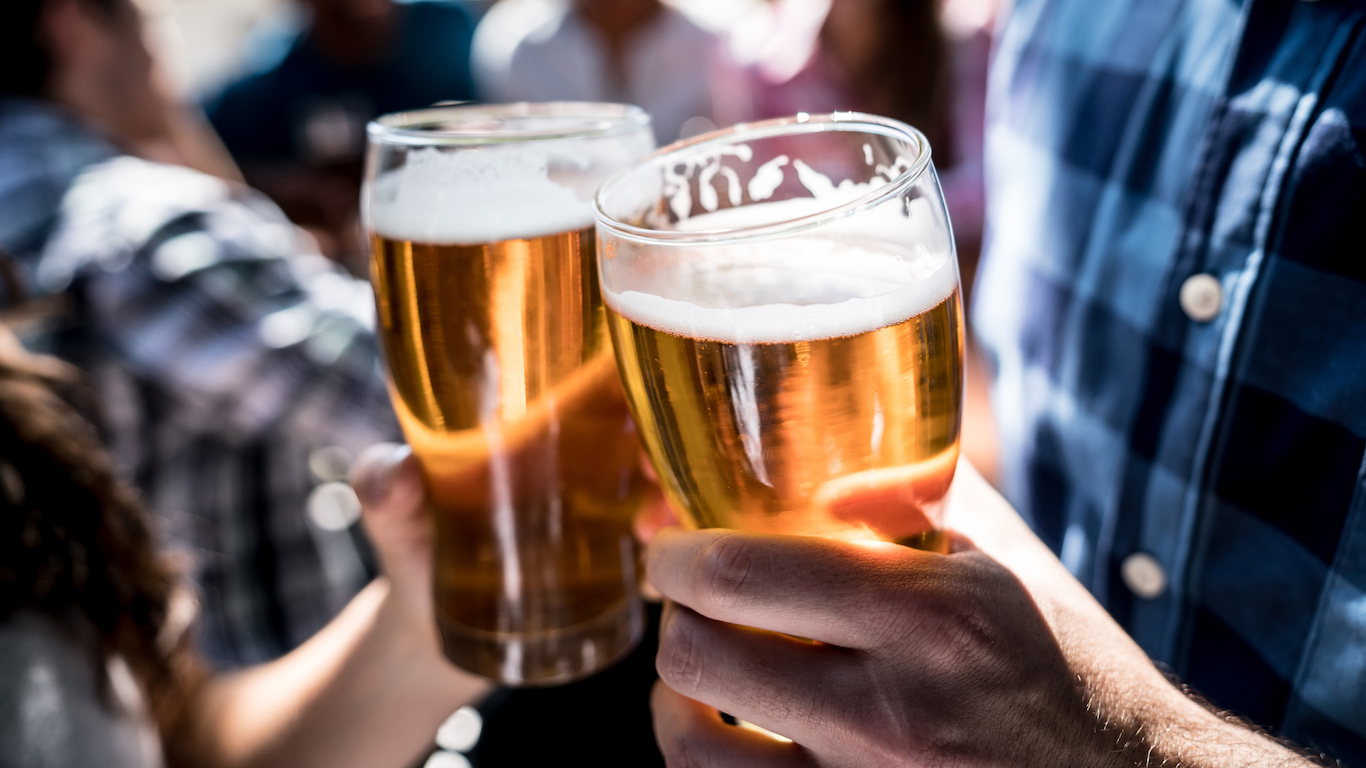
Although cancer deaths continue to drop, the disease remains the second most common cause of sickness-related fatalities in the U.S. after heart disease, the American Cancer Society reports. Between 1991 and 2019, the cancer mortality rate declined 32%, amounting to 3.5 million fewer cancer deaths than expected. The decrease is believed to be mostly due to a decline in smоking.
While cigarettes are to blame for lung, mouth, larynx, and throat cancers, however, alcohol is a leading cause of several deadly cancers, too. The National Cancer Institute points to alcohol as the chief cause of head and neck, esophageal, liver, breast, and colorectal malignancies.
Based on statistics from 2009, the Institute estimates 3.5%, or about 19,500, of cancer deaths in America were due to alcohol consumption. The high percentage of alcohol-associated deaths led the Department of Health and Human Services to list alcohol as a known human carcinogen.
The risk of cancer rose for those who had one drink every day or indulged in binge drinking – defined as four or more drinks in one sitting for women or five for men. (These are the states with the highest rates of binge drinking.)
To identify the states with the highest number of new cancer cases linked to alcohol, 24/7 Tempo reviewed a report released in June 2022 by the date site Statista. The site analyzed data from the National Cancer Institute and the Centers for Disease Control and Prevention for the years 2015-2019, compiled from selected cancer registries meeting U.S. cancer statistics data quality criteria covering 99% of the U.S. population. (Data for Nevada was unavailable.) Rates are age-adjusted. Rates and counts are suppressed if fewer than 16 cases were reported in a specific category, such as cancer type, race, ethnicity, and age.
Excessive drinking rates are from the 2022 County Health Rankings & Roadmaps program, produced by the Robert Wood Johnson Foundation and the University of Wisconsin Population Health Institute. Population data came from the U.S. Census Bureau’s 2022 American Community Survey.
Click here to see the states with the most new cancer cases linked to alcohol
Three states in the South showed the highest rate of new cancer cases linked to alcohol per 100,000 residents for the 2015-2019 period. Kentucky had 146.8 cases per 100,000, followed by Louisiana at 145.5 and Mississippi at 144.6. Utah had the fewest new cancer cases, at 108.5 per 100,000. (Here are the states where deaths from cancer are going up.)

50. Utah
> New alcohol-associated cancers diagnosed between 2015 and 2019: 108.5 per 100,000 people
> Excessive drinking rate: 11.9% — the lowest
> Median household income: $79,449 — 12th highest
> Population: 3,337,975
[in-text-ad]

49. Wyoming
> New alcohol-associated cancers diagnosed between 2015 and 2019: 113.1 per 100,000 people
> Excessive drinking rate: 20.5% — 20th highest
> Median household income: $65,204 — 20th lowest
> Population: 578,803

48. Arizona
> New alcohol-associated cancers diagnosed between 2015 and 2019: 113.2 per 100,000 people
> Excessive drinking rate: 17.4% — 13th lowest
> Median household income: $69,056 — 21st highest
> Population: 7,276,316

47. New Mexico
> New alcohol-associated cancers diagnosed between 2015 and 2019: 117.2 per 100,000 people
> Excessive drinking rate: 17.4% — 14th lowest
> Median household income: $53,992 — 6th lowest
> Population: 2,115,877
[in-text-ad-2]

46. California
> New alcohol-associated cancers diagnosed between 2015 and 2019: 123.1 per 100,000 people
> Excessive drinking rate: 18.8% — 19th lowest
> Median household income: $84,907 — 6th highest
> Population: 39,237,836

45. Colorado
> New alcohol-associated cancers diagnosed between 2015 and 2019: 123.1 per 100,000 people
> Excessive drinking rate: 20.1% — 24th highest
> Median household income: $82,254 — 10th highest
> Population: 5,812,069
[in-text-ad]

44. Virginia
> New alcohol-associated cancers diagnosed between 2015 and 2019: 126.0 per 100,000 people
> Excessive drinking rate: 17.3% — 12th lowest
> Median household income: $80,963 — 11th highest
> Population: 8,642,274

43. Idaho
> New alcohol-associated cancers diagnosed between 2015 and 2019: 126.9 per 100,000 people
> Excessive drinking rate: 19.6% — 23rd lowest
> Median household income: $66,474 — 23rd lowest
> Population: 1,900,923

41. Alaska
> New alcohol-associated cancers diagnosed between 2015 and 2019: 128.2 per 100,000 people
> Excessive drinking rate: 18.1% — 17th lowest
> Median household income: $77,845 — 13th highest
> Population: 732,673
[in-text-ad-2]

42. Texas
> New alcohol-associated cancers diagnosed between 2015 and 2019: 128.2 per 100,000 people
> Excessive drinking rate: 19.6% — 24th lowest
> Median household income: $66,963 — 24th highest
> Population: 29,527,941

40. Michigan
> New alcohol-associated cancers diagnosed between 2015 and 2019: 128.8 per 100,000 people
> Excessive drinking rate: 20.5% — 21st highest
> Median household income: $63,498 — 17th lowest
> Population: 10,050,811
[in-text-ad]

39. Oregon
> New alcohol-associated cancers diagnosed between 2015 and 2019: 128.8 per 100,000 people
> Excessive drinking rate: 21.2% — 16th highest
> Median household income: $71,562 — 19th highest
> Population: 4,246,155

38. South Dakota
> New alcohol-associated cancers diagnosed between 2015 and 2019: 128.9 per 100,000 people
> Excessive drinking rate: 24.4% — 4th highest
> Median household income: $66,143 — 22nd lowest
> Population: 895,376
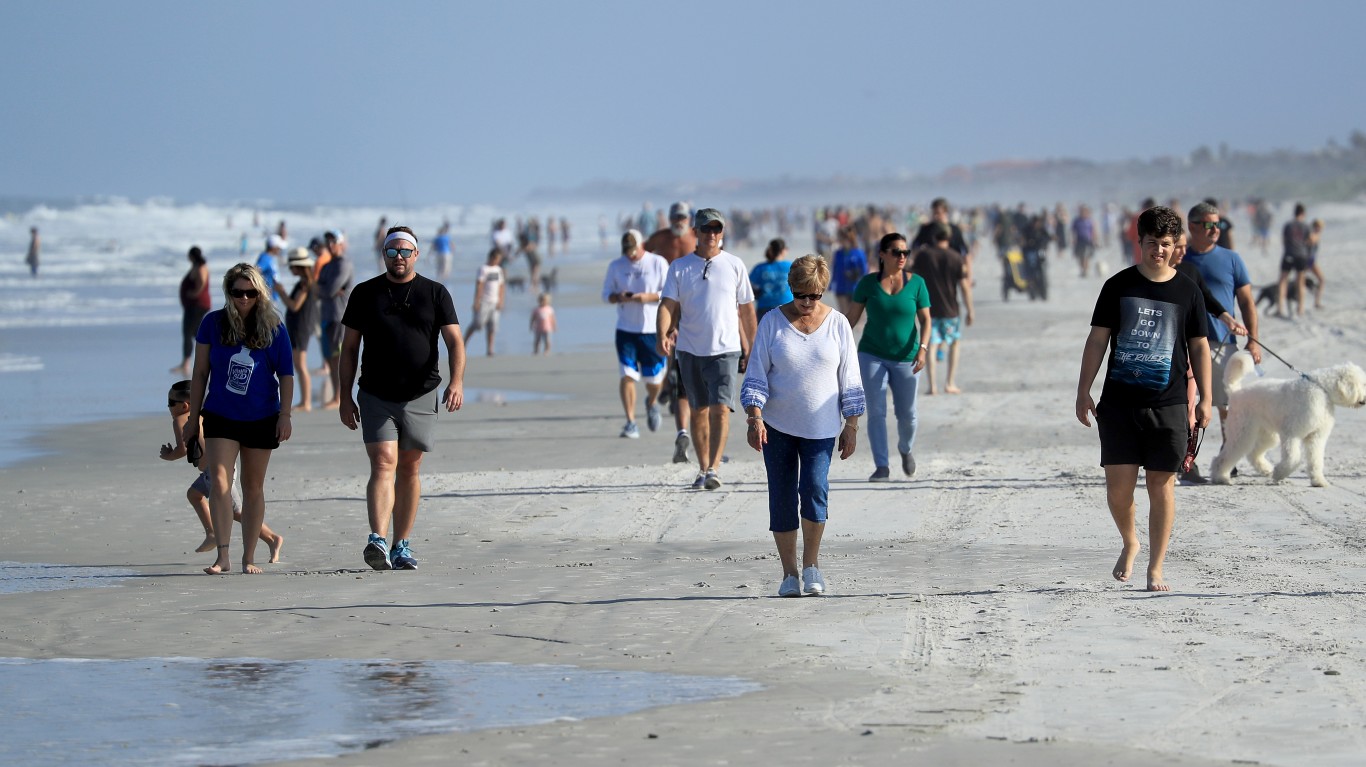
37. Florida
> New alcohol-associated cancers diagnosed between 2015 and 2019: 129.3 per 100,000 people
> Excessive drinking rate: 20.2% — 23rd highest
> Median household income: $63,062 — 15th lowest
> Population: 21,781,128
[in-text-ad-2]

36. Vermont
> New alcohol-associated cancers diagnosed between 2015 and 2019: 129.3 per 100,000 people
> Excessive drinking rate: 23.2% — 9th highest
> Median household income: $72,431 — 17th highest
> Population: 645,570

35. Washington
> New alcohol-associated cancers diagnosed between 2015 and 2019: 130.9 per 100,000 people
> Excessive drinking rate: 16.5% — 9th lowest
> Median household income: $84,247 — 8th highest
> Population: 7,738,692
[in-text-ad]

34. Montana
> New alcohol-associated cancers diagnosed between 2015 and 2019: 131.3 per 100,000 people
> Excessive drinking rate: 24.3% — 5th highest
> Median household income: $63,249 — 16th lowest
> Population: 1,104,271

33. Maine
> New alcohol-associated cancers diagnosed between 2015 and 2019: 132.7 per 100,000 people
> Excessive drinking rate: 22.5% — 12th highest
> Median household income: $64,767 — 19th lowest
> Population: 1,372,247

32. Minnesota
> New alcohol-associated cancers diagnosed between 2015 and 2019: 132.9 per 100,000 people
> Excessive drinking rate: 23.4% — 7th highest
> Median household income: $77,720 — 14th highest
> Population: 5,707,390
[in-text-ad-2]

31. Wisconsin
> New alcohol-associated cancers diagnosed between 2015 and 2019: 132.9 per 100,000 people
> Excessive drinking rate: 25.2% — the highest
> Median household income: $67,125 — 23rd highest
> Population: 5,895,908
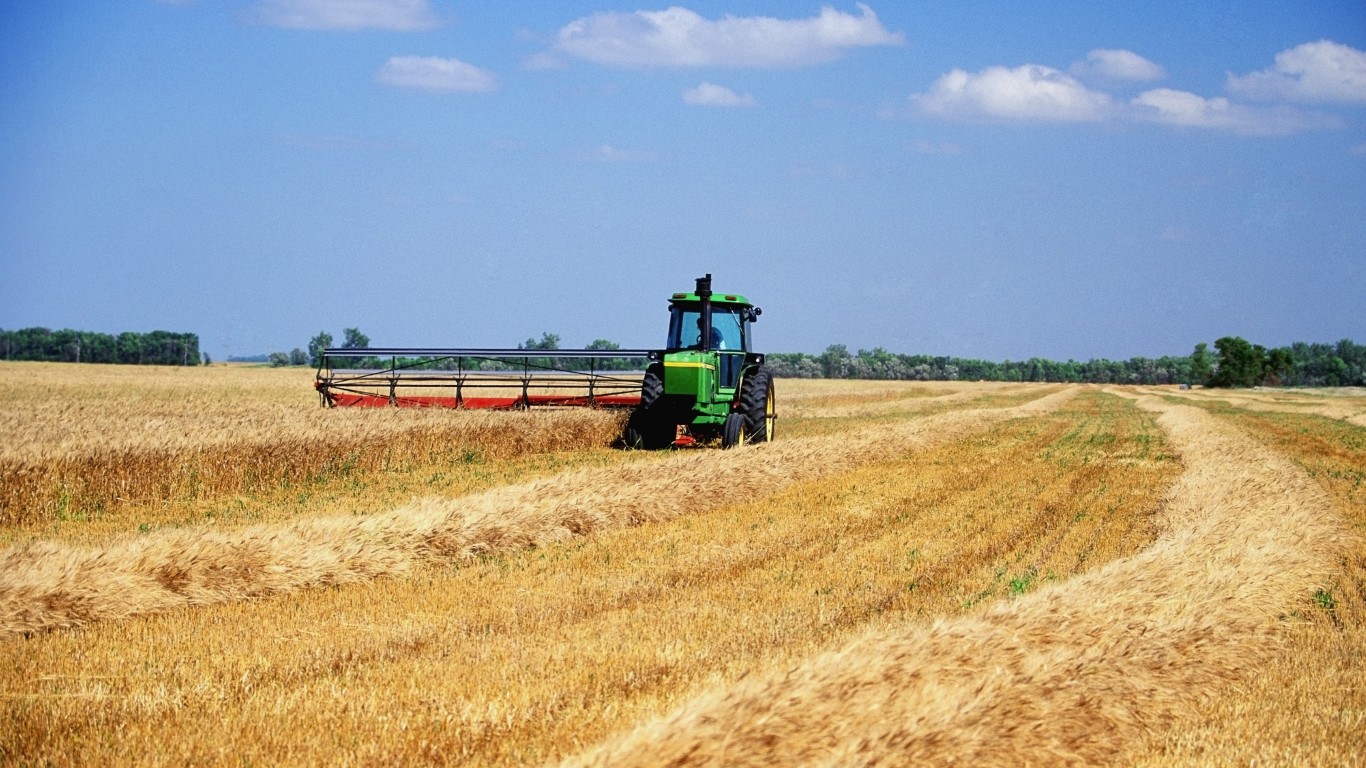
30. North Dakota
> New alcohol-associated cancers diagnosed between 2015 and 2019: 133.1 per 100,000 people
> Excessive drinking rate: 24.1% — 6th highest
> Median household income: $66,519 — 24th lowest
> Population: 774,948
[in-text-ad]

29. Maryland
> New alcohol-associated cancers diagnosed between 2015 and 2019: 133.5 per 100,000 people
> Excessive drinking rate: 16.0% — 7th lowest
> Median household income: $90,203 — the highest
> Population: 6,165,129

28. Massachusetts
> New alcohol-associated cancers diagnosed between 2015 and 2019: 133.5 per 100,000 people
> Excessive drinking rate: 22.5% — 11th highest
> Median household income: $89,645 — 3rd highest
> Population: 6,984,723

26. Indiana
> New alcohol-associated cancers diagnosed between 2015 and 2019: 134.7 per 100,000 people
> Excessive drinking rate: 17.7% — 15th lowest
> Median household income: $62,743 — 14th lowest
> Population: 6,805,985
[in-text-ad-2]

27. Kansas
> New alcohol-associated cancers diagnosed between 2015 and 2019: 134.7 per 100,000 people
> Excessive drinking rate: 20.0% — 25th highest
> Median household income: $64,124 — 18th lowest
> Population: 2,934,582

25. South Carolina
> New alcohol-associated cancers diagnosed between 2015 and 2019: 134.8 per 100,000 people
> Excessive drinking rate: 21.7% — 14th highest
> Median household income: $59,318 — 9th lowest
> Population: 5,190,705
[in-text-ad]

23. Nebraska
> New alcohol-associated cancers diagnosed between 2015 and 2019: 135.3 per 100,000 people
> Excessive drinking rate: 23.2% — 8th highest
> Median household income: $66,817 — 25th highest
> Population: 1,963,692

24. Tennessee
> New alcohol-associated cancers diagnosed between 2015 and 2019: 135.3 per 100,000 people
> Excessive drinking rate: 17.2% — 11th lowest
> Median household income: $59,695 — 10th lowest
> Population: 6,975,218
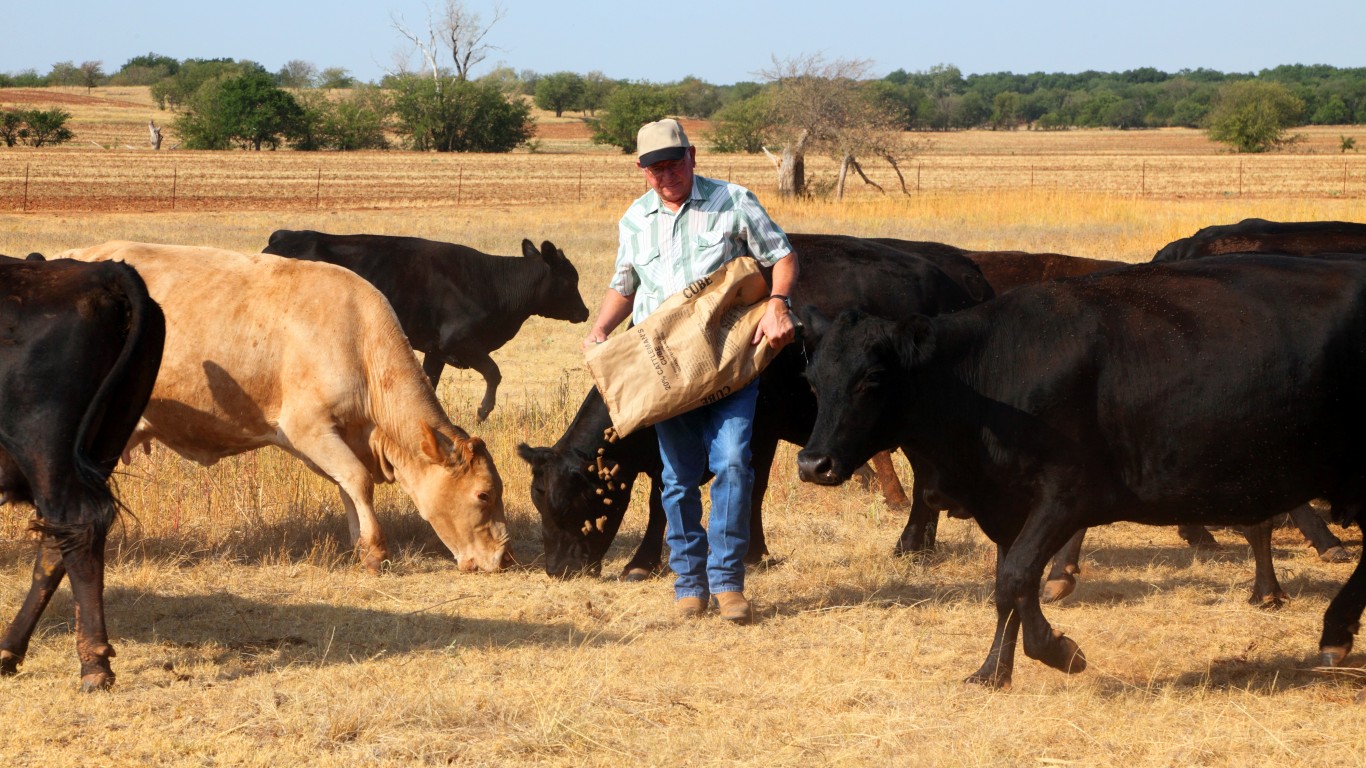
22. Oklahoma
> New alcohol-associated cancers diagnosed between 2015 and 2019: 135.5 per 100,000 people
> Excessive drinking rate: 14.5% — 2nd lowest
> Median household income: $55,826 — 8th lowest
> Population: 3,986,639
[in-text-ad-2]
21. Connecticut
> New alcohol-associated cancers diagnosed between 2015 and 2019: 136.4 per 100,000 people
> Excessive drinking rate: 19.2% — 21st lowest
> Median household income: $83,771 — 9th highest
> Population: 3,605,597

19. New York
> New alcohol-associated cancers diagnosed between 2015 and 2019: 136.5 per 100,000 people
> Excessive drinking rate: 19.0% — 20th lowest
> Median household income: $74,314 — 15th highest
> Population: 19,835,913
[in-text-ad]

20. Rhode Island
> New alcohol-associated cancers diagnosed between 2015 and 2019: 136.5 per 100,000 people
> Excessive drinking rate: 21.7% — 15th highest
> Median household income: $74,008 — 16th highest
> Population: 1,095,610

18. New Hampshire
> New alcohol-associated cancers diagnosed between 2015 and 2019: 136.8 per 100,000 people
> Excessive drinking rate: 20.8% — 17th highest
> Median household income: $88,465 — 5th highest
> Population: 1,388,992
17. Alabama
> New alcohol-associated cancers diagnosed between 2015 and 2019: 136.9 per 100,000 people
> Excessive drinking rate: 14.8% — 3rd lowest
> Median household income: $53,913 — 5th lowest
> Population: 5,039,877
[in-text-ad-2]

16. Delaware
> New alcohol-associated cancers diagnosed between 2015 and 2019: 137.0 per 100,000 people
> Excessive drinking rate: 20.5% — 22nd highest
> Median household income: $71,091 — 20th highest
> Population: 1,003,384

15. Missouri
> New alcohol-associated cancers diagnosed between 2015 and 2019: 137.4 per 100,000 people
> Excessive drinking rate: 19.5% — 22nd lowest
> Median household income: $61,847 — 11th lowest
> Population: 6,168,187
[in-text-ad]

12. District of Columbia
> New alcohol-associated cancers diagnosed between 2015 and 2019: 137.5 per 100,000 people
> Excessive drinking rate: 24.5% — 3rd highest
> Median household income: $90,088 — 2nd highest
> Population: 670,050

13. North Carolina
> New alcohol-associated cancers diagnosed between 2015 and 2019: 137.5 per 100,000 people
> Excessive drinking rate: 16.5% — 10th lowest
> Median household income: $61,972 — 12th lowest
> Population: 10,551,162

14. Pennsylvania
> New alcohol-associated cancers diagnosed between 2015 and 2019: 137.5 per 100,000 people
> Excessive drinking rate: 19.8% — 25th lowest
> Median household income: $68,957 — 22nd highest
> Population: 12,964,056
[in-text-ad-2]

11. Georgia
> New alcohol-associated cancers diagnosed between 2015 and 2019: 137.6 per 100,000 people
> Excessive drinking rate: 17.8% — 16th lowest
> Median household income: $66,559 — 25th lowest
> Population: 10,799,566

10. Ohio
> New alcohol-associated cancers diagnosed between 2015 and 2019: 137.8 per 100,000 people
> Excessive drinking rate: 20.7% — 18th highest
> Median household income: $62,262 — 13th lowest
> Population: 11,780,017
[in-text-ad]

9. Arkansas
> New alcohol-associated cancers diagnosed between 2015 and 2019: 138.7 per 100,000 people
> Excessive drinking rate: 15.9% — 6th lowest
> Median household income: $52,528 — 4th lowest
> Population: 3,025,891

8. Hawaii
> New alcohol-associated cancers diagnosed between 2015 and 2019: 138.9 per 100,000 people
> Excessive drinking rate: 20.7% — 19th highest
> Median household income: $84,857 — 7th highest
> Population: 1,441,553

7. New Jersey
> New alcohol-associated cancers diagnosed between 2015 and 2019: 139.1 per 100,000 people
> Excessive drinking rate: 16.0% — 8th lowest
> Median household income: $89,296 — 4th highest
> Population: 9,267,130
[in-text-ad-2]

6. Illinois
> New alcohol-associated cancers diagnosed between 2015 and 2019: 139.2 per 100,000 people
> Excessive drinking rate: 22.9% — 10th highest
> Median household income: $72,205 — 18th highest
> Population: 12,671,469

5. West Virginia
> New alcohol-associated cancers diagnosed between 2015 and 2019: 139.8 per 100,000 people
> Excessive drinking rate: 15.2% — 4th lowest
> Median household income: $51,248 — 2nd lowest
> Population: 1,782,959
[in-text-ad]

4. Iowa
> New alcohol-associated cancers diagnosed between 2015 and 2019: 141.4 per 100,000 people
> Excessive drinking rate: 24.6% — 2nd highest
> Median household income: $65,600 — 21st lowest
> Population: 3,193,079

3. Mississippi
> New alcohol-associated cancers diagnosed between 2015 and 2019: 144.6 per 100,000 people
> Excessive drinking rate: 15.9% — 5th lowest
> Median household income: $48,716 — the lowest
> Population: 2,949,965

2. Louisiana
> New alcohol-associated cancers diagnosed between 2015 and 2019: 145.5 per 100,000 people
> Excessive drinking rate: 21.9% — 13th highest
> Median household income: $52,087 — 3rd lowest
> Population: 4,624,047
[in-text-ad-2]

1. Kentucky
> New alcohol-associated cancers diagnosed between 2015 and 2019: 146.8 per 100,000 people
> Excessive drinking rate: 18.2% — 18th lowest
> Median household income: $55,573 — 7th lowest
> Population: 4,509,394
Travel Cards Are Getting Too Good To Ignore (sponsored)
Credit card companies are pulling out all the stops, with the issuers are offering insane travel rewards and perks.
We’re talking huge sign-up bonuses, points on every purchase, and benefits like lounge access, travel credits, and free hotel nights. For travelers, these rewards can add up to thousands of dollars in flights, upgrades, and luxury experiences every year.
It’s like getting paid to travel — and it’s available to qualified borrowers who know where to look.
We’ve rounded up some of the best travel credit cards on the market. Click here to see the list. Don’t miss these offers — they won’t be this good forever.
Thank you for reading! Have some feedback for us?
Contact the 24/7 Wall St. editorial team.
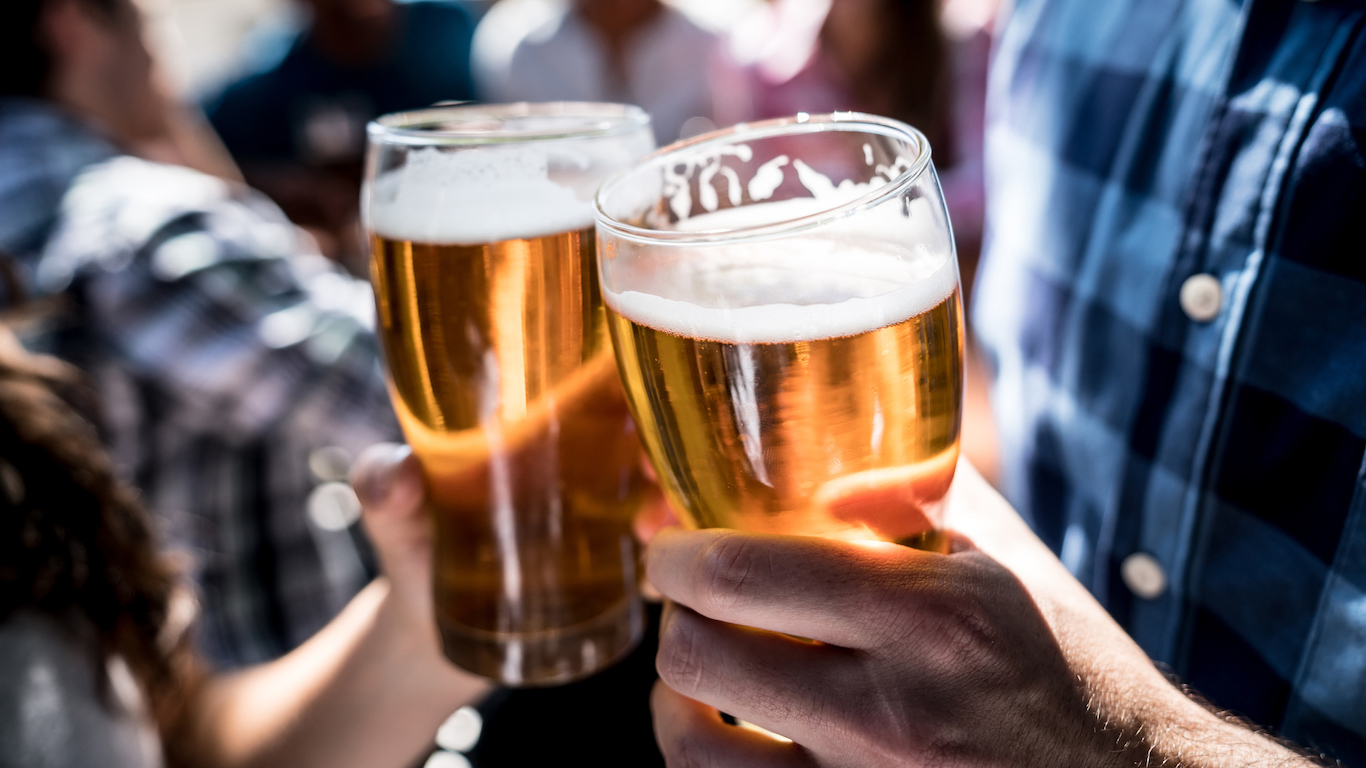 24/7 Wall St.
24/7 Wall St.




